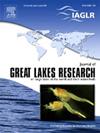选定的非洲跨境湖泊和大裂谷湖泊中的人为垃圾污染
IF 2.4
3区 环境科学与生态学
Q3 ENVIRONMENTAL SCIENCES
引用次数: 0
摘要
垃圾污染是一个日益严重的问题,几乎影响到世界上所有的海洋、湖泊和河流。为了确定塑料垃圾的丰度、组成、分布和潜在来源,我们采用常量法对选定的非洲大湖(维多利亚湖和图尔卡纳湖)和两个大裂谷湖(奈瓦沙湖和巴林戈湖)进行了全面的海滩和漂浮垃圾调查。共收集到 11,977 件大颗粒垃圾,平均密度为 2.890 ± 1.90 件/平方米。奈瓦沙湖的海滩污染最严重,平均大颗粒垃圾密度为 3.707 ± 1.975 个/平方米,其次是维多利亚湖(3.375 ± 1.825 个/平方米)、巴林戈湖(2.156 ± 1.324 个/平方米)和图尔卡纳湖(1.732 ± 2.276 个/平方米)。塑料是最主要的垃圾类别(2.269 ± 1.503 件/平方米,78.9%),其中低密度聚乙烯是最常见的包装类型(69.5%)。在收集到的所有垃圾中,23.7 % 有明显的烙印。在有品牌的垃圾中,97%来自本地制造商,其中食品包装占了品牌垃圾的绝大部分(71.6%)。维多利亚湖(53.48 ± 41.32 件/平方米)与图尔卡纳湖(7.56 ± 5.85 件/平方米)相比,海滩上介质垃圾的平均密度更高,其中玻璃是最多的垃圾类别(70.5%)。在漂浮物调查中,共捞出 125 件垃圾,平均密度为 13,041 件/平方公里。研究得出结论,这些湖泊中的垃圾污染源于当地,并建议执行生产者延伸责任制,以防止垃圾渗漏到环境中。本文章由计算机程序翻译,如有差异,请以英文原文为准。
Anthropogenic litter pollution in selected African transboundary and Great Rift Valley lakes
Litter pollution is a growing problem affecting almost all the world’s oceans, lakes, and rivers. Comprehensive beach and floating litter surveys were carried out in select African Great Lakes (Lake Victoria and Lake Turkana) and two Great Rift Valley lakes (Lake Naivasha and Lake Baringo) using the standing stock method to determine the abundance, composition, distribution and potential sources of plastic litter. A total of 11,977 macrolitter items were collected, translating to a mean density of 2.890 ± 1.90 items/m2. Lake Naivasha had the most polluted beaches with a mean macrolitter density of 3.707 ± 1.975 items/m2 followed by Lake Victoria (3.375 ± 1.825 items/m2), Lake Baringo (2.156 ± 1.324 items/m2) and Lake Turkana (1.732 ± 2.276 items/m2). Plastic was the most dominant litter category (2.269 ± 1.503 items/m2, 78.9 %), with LDPE being the most abundant type of packaging (69.5 %). Of all the litter items collected, 23.7 % had visible branding. Of the branded items, 97 % originated from local manufacturers, with food product packaging accounting for a majority (71.6 %) of the branded items. The mean density of mesolitter items on beaches was higher in Lake Victoria (53.48 ± 41.32 items/m2) compared to Lake Turkana (7.56 ± 5.85 items/m2) with glass being the most abundant litter category (70.5 %). A total of 125 litter items were retrieved during floating surveys translating to a mean density of 13,041 items/km2. The study concludes that litter pollution in these lakes is of local origin and recommends enforcement of extended producer responsibility to prevent litter leakage into the environment.
求助全文
通过发布文献求助,成功后即可免费获取论文全文。
去求助
来源期刊

Journal of Great Lakes Research
生物-海洋与淡水生物学
CiteScore
5.10
自引率
13.60%
发文量
178
审稿时长
6 months
期刊介绍:
Published six times per year, the Journal of Great Lakes Research is multidisciplinary in its coverage, publishing manuscripts on a wide range of theoretical and applied topics in the natural science fields of biology, chemistry, physics, geology, as well as social sciences of the large lakes of the world and their watersheds. Large lakes generally are considered as those lakes which have a mean surface area of >500 km2 (see Herdendorf, C.E. 1982. Large lakes of the world. J. Great Lakes Res. 8:379-412, for examples), although smaller lakes may be considered, especially if they are very deep. We also welcome contributions on saline lakes and research on estuarine waters where the results have application to large lakes.
 求助内容:
求助内容: 应助结果提醒方式:
应助结果提醒方式:


